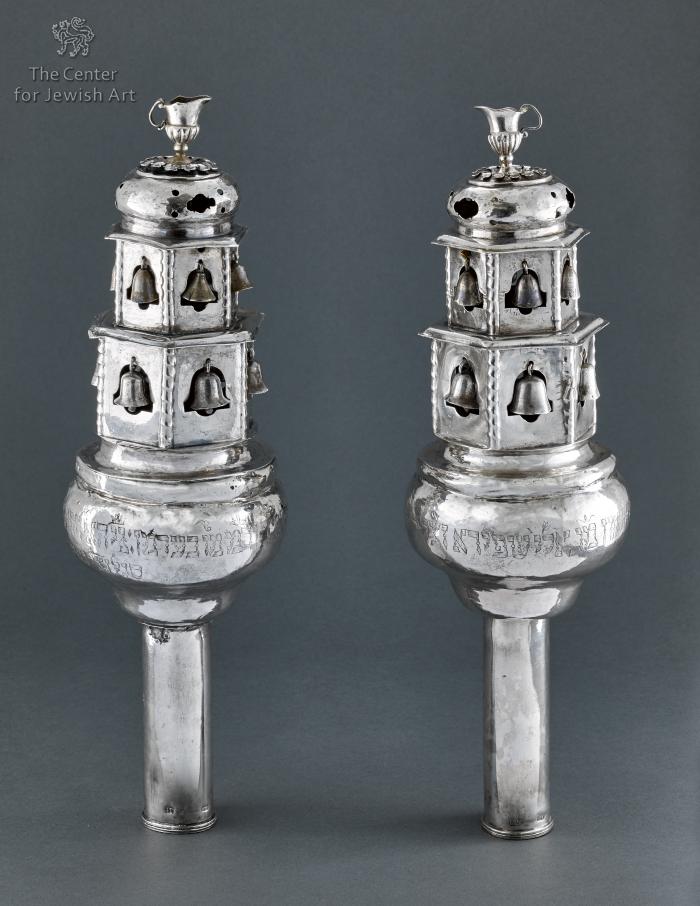Obj. ID: 36932
Sacred and Ritual Objects Torah finials, Fürth, 1739

The following description was prepared by William Gross:
The finials evolved from knobs at the upper end of the staves (Atzei Chaim) on which the Torah scroll is wound. Since the shape of the spherical finial recalled that of a fruit, it was called a tappu'aḥ, "apple," among the Jews of Spain and in the Sephardi Diaspora, and a rimmon, "pomegranate," in all other communities.
The earliest known reference to Torah finials occurs in a document from 1159, found in the Cairo Genizah, from which we learn that by the 12th-century finials were already being made of silver and had bells. Around the same time, Maimonides mentions finials in the Mishneh Torah (Hilkhot Sefer Torah 10:4). Despite the variations on the spherical shape which developed over the centuries and the addition of small bells around the main body of the finial, the spherical, fruit-like form was the basic model for the design of finials in Oriental and European communities.
A most significant variation appeared in 15th-century Spain, Italy, and Germany, where the shape of finials was influenced by that of various objects of church ritual, whose design often incorporated architectural motifs, The resulting tower-like structure, which seems to have appeared around the same time in different parts of Europe, became the main type of finial in 18th-century Germany and Italy, as well as Morocco, brought there by Jews expelled from Spain.
There are often typical forms for a given city, and the form of this pair of Rimmonim is identified with the German city Fuerth. This may well be the earliest surviving pair of this type, but other examples exist from throughout the 18th century in other collections. The inscription is particularly interesting, recording the union of two exceptionally famous families, one from Fuerth and one from Prague. The use of lavers on the top of the finials instead of the more traditional lions is representative of the Levite status of the families. The lengthy inscription covering both finials is rendered with very fine Gothic Hebrew letters.
Inscription:
Donated by the honorable and respected teacher and Rabbi, the Rav Wolff, leader of the congregation ......., son of the great, wise and famous head of the Rabbinical court and Yeshiva, the teacher and Rabbi Bermann Segal, of blessed memory, from Furth and his wife Mrs. Rebecca, daughter of the genius, the teacher and Rabbi, Elya Shapira, of blessed memory, head of the Yeshiva and preacher in the holy congregation of Prague, 5499 (1739), according to the minor reckoning







